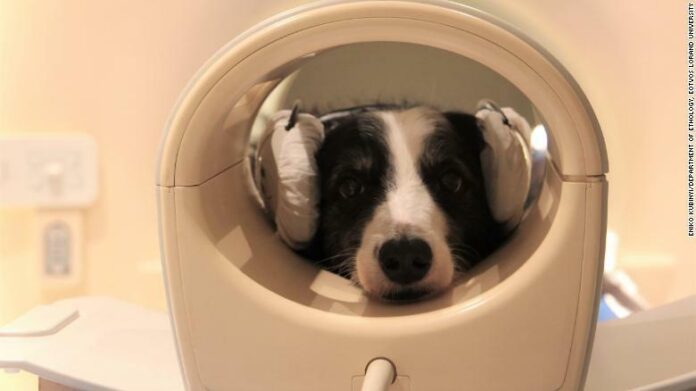Researchers have confirmed what many dog owners may have suspected for years- dogs understand when a foreign language is being spoken! Whilst many dogs’ humans may have noticed their puppy friend prick their ears at another language, it is only now that science has confirmed their ability to discern between languages.
“This is the first nonprimate species for which we could show spontaneous language ability — the first time we could localize it and see where in the brain this combination of two languages takes place,” said Atilla Andics, head of Ethology (the study of animals) at the Eötvös Loránd University in Budapest, Hungary.
The study was developed by Laura Cuaya, a postdoctoral researcher behind the study at the Eötvös Loránd University. She created the research project after moving from Mexico to Hungary with her own dog, Kun-kun. Kun-kun was been brought up around Spanish speaking people. “I wondered if Kun-kun realized that people in Budapest spoke another language,” Cuaya said. The curiosity developed into the recently published research project involving 18 dogs- Kun Kun being one of them.
The study began with training the 18 dogs- five golden retrievers, six border collies, two Australian shepherds, one cocker spaniel, one labradoodle, and three mixed breeds- to stay still so that a brain scan could be performed. Whilst the dogs were in the MRI machine they were read to in both Hungarian and Spanish. Out of the motley group of dogs, sixteen of the dogs’ native language is Hungarian, whilst the remaining two is Spanish. The text that was chosen to be read to the dogs was The Little Prince- a book that none of them had heard before. Chapter 21 of the book was read to the dogs by both a native Hungarian speaker, as well as a native Spanish speaker. After they were read to in the two languages, a third made-up gobbledygook language was added into the mix.
Results
After the tests were conducted Cuaya and the other researchers compared the findings of the MRI scans. The results showed different patterns of activity in the primary auditory cortex when nonsense words were spoken than when dogs heard a real language. The scans also showed different areas of the brain became active when an unknown language was spoken versus when familiar speech was heard.
“Our findings suggest that during their lives with humans, dogs pick up on the auditory regularities of the language they are exposed to,” Raúl Hernández-Pérez, a postdoctoral fellow who co-authored the study said.
“This is actually pretty similar to what we see with very young preverbal infants who can differentiate between languages spontaneously before they start to speak,”
Another fascinating finding of the experiment was that older dogs and dogs with longer snouts were the best at understanding the differences in languages.

